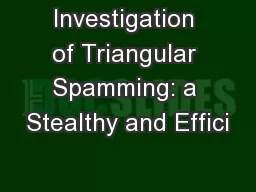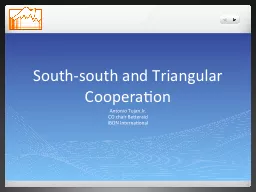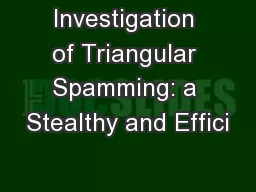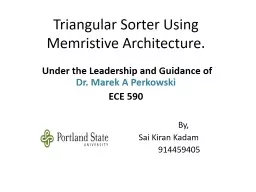PPT-Investigation of Triangular Spamming: a Stealthy and Effici
Author : lois-ondreau | Published Date : 2016-02-21
Zhiyun Qian Z Morley Mao University of Michigan Yinglian Xie Fang Yu Microsoft Research Silicon Valley 1 Introduction Security is an arms race so is spam New spamming
Presentation Embed Code
Download Presentation
Download Presentation The PPT/PDF document "Investigation of Triangular Spamming: a ..." is the property of its rightful owner. Permission is granted to download and print the materials on this website for personal, non-commercial use only, and to display it on your personal computer provided you do not modify the materials and that you retain all copyright notices contained in the materials. By downloading content from our website, you accept the terms of this agreement.
Investigation of Triangular Spamming: a Stealthy and Effici: Transcript
Download Rules Of Document
"Investigation of Triangular Spamming: a Stealthy and Effici"The content belongs to its owner. You may download and print it for personal use, without modification, and keep all copyright notices. By downloading, you agree to these terms.
Related Documents














